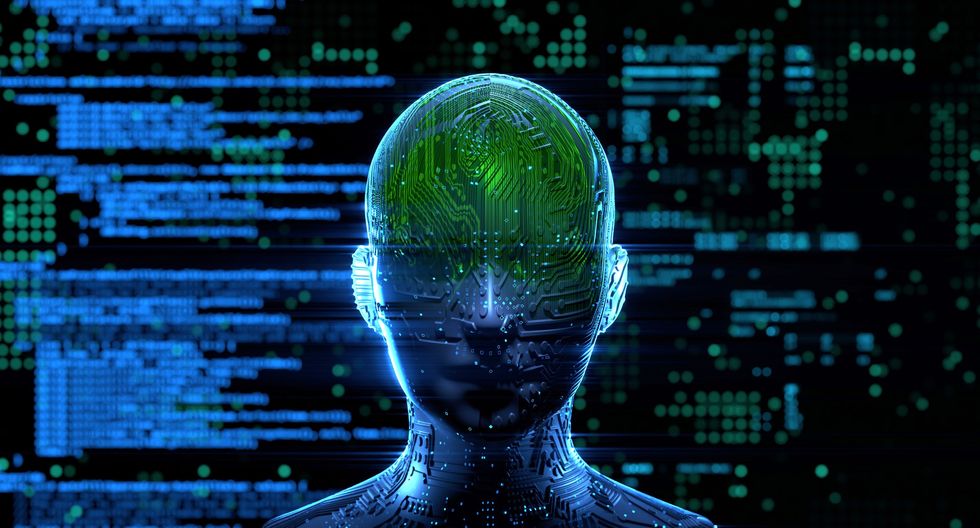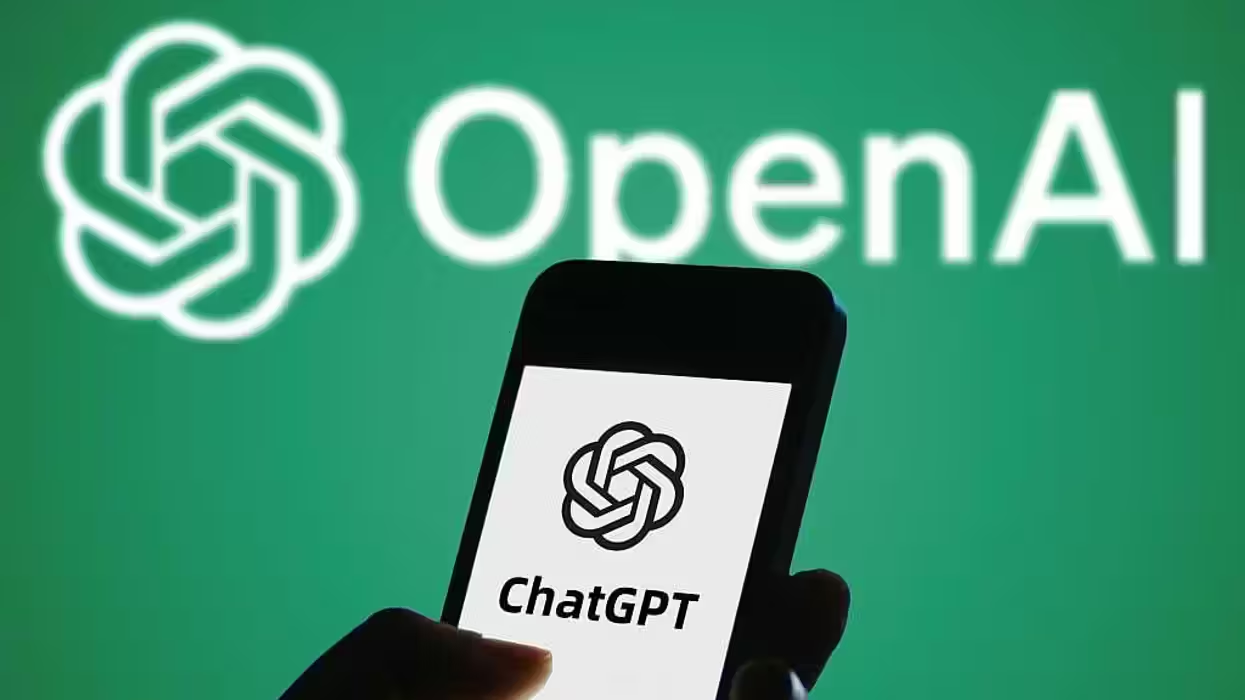
© 2025 Blaze Media LLC. All rights reserved.
ARTIFICIAL INTELLIGENCE IN THE AGE OF DISRUPTION
Although it is true robots won’t soon be heading off to work in their self-driving cars to take jobs away from unsuspecting American office workers, there is already a massive push from businesses to automate many core functions of their businesses using artificial intelligence. AI is a massive topic that we’re going to discuss and describe in more detail in chapter 6, but for now, the primary thing you need to understand about AI is that artificial intelligence involves machines that are capable of thinking, to various degrees, like a human being. Or, as IBM puts it, “Artificial intelligence leverages computers and machines to mimic the problem-solving and decision-making capabilities of the human mind.” In an article for Forbes, Archil Cheishvili, CEO and cofounder of GenesisAI, a global network of AI services and products, explains, “Artificial intelligence can be broadly categorized into three main types: artificial narrow intelligence (ANI), artificial general intelligence (AGI) and artificial superintelligence (ASI).”
Artificial general intelligence and artificial superintelligence are the advanced forms of AI you usually see in sci-fi movies, where machines are capable of functioning like humans, or perhaps even superior to humans. At this point, AGI and ASI do not exist — and boy am I glad about that, because the world isn’t ready for the challenges we’re going to face when they do. But “narrow” artificial intelligence does exist today. In fact, there’s a good chance you use it almost every single day.
And AI is used by Google to learn users’ interests and offer website and news recommendations, often along with some good old-fashioned Google ideological bias.
As Forbes contributor and AI expert Naveen Joshi explains, artificial narrow intelligence “represents all the existing AI, including even the most complicated and capable AI that has ever been created to date.”
“Artificial narrow intelligence refers to AI systems that can only perform a specific task autonomously using humanlike capabilities,” Joshi wrote. “These machines can do nothing more than what they are programmed to do, and thus have a very limited or narrow range of competencies.”
Descriptions of narrow AI sometimes make it sound unimpressive, but narrow AI is one of the most advanced technologies humans have ever produced. These systems are capable of performing tasks at a rate that far surpasses anything a human being could ever achieve, and contrary to what you might think, narrow AI already has a remarkable effect on our daily lives.
Futurist Bernard Marr notes that although many “might imagine that artificial intelligence is only something the big tech giants are focused on, and that AI doesn’t impact your everyday life,” the truth is “artificial intelligence is encountered by most people from morning until night.”
For example, whenever you visit a social media site, including Facebook, Twitter, Instagram, or YouTube, artificial intelligence is there, “working behind the scenes to personalize what you see on your feeds (because it’s learned what types of posts most resonate with you based on past history).” Social media AI is also “figuring out friend suggestions,” and “machine learning is working to prevent cyberbullying.”
Artificial intelligence programs are further utilized to help users compose messages and identify grammatical mistakes and spelling errors in emails. And AI is used by Google to learn users’ interests and offer website and news recommendations, often along with some good old-fashioned Google ideological bias. The advertisements you see online, the navigation applications you use to help you drive around, the movie recommendations offered to you by Netflix, and the fraud-detection alerts sent to you by your bank or credit card company are all dependent on narrow artificial intelligence.
Further, nearly all the products you buy and shipments you receive will also soon be heavily impacted by narrow forms of artificial intelligence. Many already are. The complexity of the modern, highly globalized economy has made supply chains incredibly difficult to manage. Timing shipments and transportation within narrow windows, something that used to be virtually impossible, is now commonplace because of advanced computers running artificial intelligence programs, rapidly improving supply-chain operations.
McKinsey & Company notes that modern AI solutions “include demand-forecasting models, end-to-end transparency, integrated business planning, dynamic planning optimization, and automation of the physical flow — all of which build on prediction models and correlation analysis to better understand causes and effects in supply chains.”
According to McKinsey, “Successfully implementing AI-enabled supply-chain management has enabled early adopters to improve logistics costs by 15 percent, inventory levels by 35 percent, and service levels by 65 percent, compared with slower-moving competitors.”
Narrow artificial intelligence is most effective when it has access to large amounts of data, which allows it to detect patterns, recognize efficiencies and inefficiencies, and offer recommendations or make decisions based on more information than humans are physically capable of processing. Modern AI can process millions or even billions of pieces of data, and it can do so in a tiny fraction of the time required for people to manually produce the same result. This impressive processing power improves economic efficiency, making economies wealthier and increasing quality of life for most people. However, it is also beginning to push many workers out of their jobs, a trend that will increase rapidly over the next decade.

In a book titled "Futureproof: 9 Rules for Humans in the Age of Automation," New York Times technology columnist Kevin Roose details countless studies, news reports, and personal interviews and experiences that illustrate the high level of disruption already being caused by businesses’ move toward artificial intelligence, as well as the even bigger challenges ahead.
According to Roose, existing data show “white-collar workers may actually be more likely to be automated out of a job than blue-collar workers,” and many mid-level workers with good-paying jobs in human resources, accounting, and other data-intensive positions are already being phased out by well-designed narrow artificial intelligence programs.
Roose highlights throughout his book that, as artificial intelligence continues to develop, AI algorithms will far surpass the abilities of even many of the highest-skilled workers. Not even lawyers and doctors will be safe from the coming AI-driven automation revolution.
“In 2018, a Chinese tech company built a deep learning algorithm that diagnosed brain cancer and other diseases faster and more accurately than a team of fifteen top doctors,” Roose wrote. “The same year, American researchers developed an algorithm capable of identifying malignant tumors on a CT scan with an error rate twenty times lower than a human radiologist.”
Roose further noted, “In a 2018 study, twenty top U.S. corporate lawyers were pitted against an algorithm developed by an AI start-up called LawGeex. Their task was to spot legal issues in five nondisclosure agreements — a staple of basic contract law — as quickly as possible. The algorithm crushed the lawyers with an average 94 percent accuracy rate, compared to the average human accuracy rate of 85 percent.”
Some of these figures may seem difficult to comprehend. How exactly would AI displace jobs with such disruptive force? The release of OpenAI’s ChatGPT product in November 2022 has provided some insight into this important question. ChatGPT is a cutting-edge technology developed by OpenAI that can understand and respond to natural language input, a skill normally only possessed by humans. It has been trained on a massive amount of data, allowing it to generate high-quality responses to a wide range of questions and topics. Simply put, ChatGPT is a game-changer.
In the customer service industry, businesses can use ChatGPT as a virtual assistant to handle simple customer inquiries, freeing up human agents to focus on more complex issues. ChatGPT can also be used in education, health care, and finance to provide personalized support to customers and patients.
This technology has the potential to transform numerous business practices. It can automate tasks, improve customer experiences, and provide valuable support for workers and consumers.
ChatGPT is so important because it’s one of the first AI technologies released to the public that can effectively and believably mimic humans’ writing and research abilities on a wide array of topics. It learns and adapts in a way that other lesser-impressive forms of AI in the past have been unable to do.
Don’t believe me? The three previous paragraphs were written almost completely by ChatGPT. I simply asked ChatGPT to describe itself and its potential impacts “in the style of Glenn Beck,” and in a matter of seconds, it provided me with text good enough to fool just about everyone, including my editors. As good as ChatGPT is, though, I do admit I had to edit a few words here and there before publication. Apparently, ChatGPT thinks I like to include the word “folks” a lot in my writing.
To read the rest of "Dark Future" by Glenn Beck, consider purchasing it here or wherever fine books are sold.
Want to leave a tip?
We answer to you. Help keep our content free of advertisers and big tech censorship by leaving a tip today.
Want to join the conversation?
Already a subscriber?
Co-Founder
Glenn Beck is the host of “The Glenn Beck Program” and co-founder of Blaze Media.
glennbeck
Glenn Beck
Co-Founder
Glenn Beck is the host of “The Glenn Beck Program” and co-founder of Blaze Media.
@glennbeck →
more stories
Related Content
© 2025 Blaze Media LLC. All rights reserved.
Get the stories that matter most delivered directly to your inbox.
By signing up, you agree to our Privacy Policy and Terms of Use, and agree to receive content that may sometimes include advertisements. You may opt out at any time.






